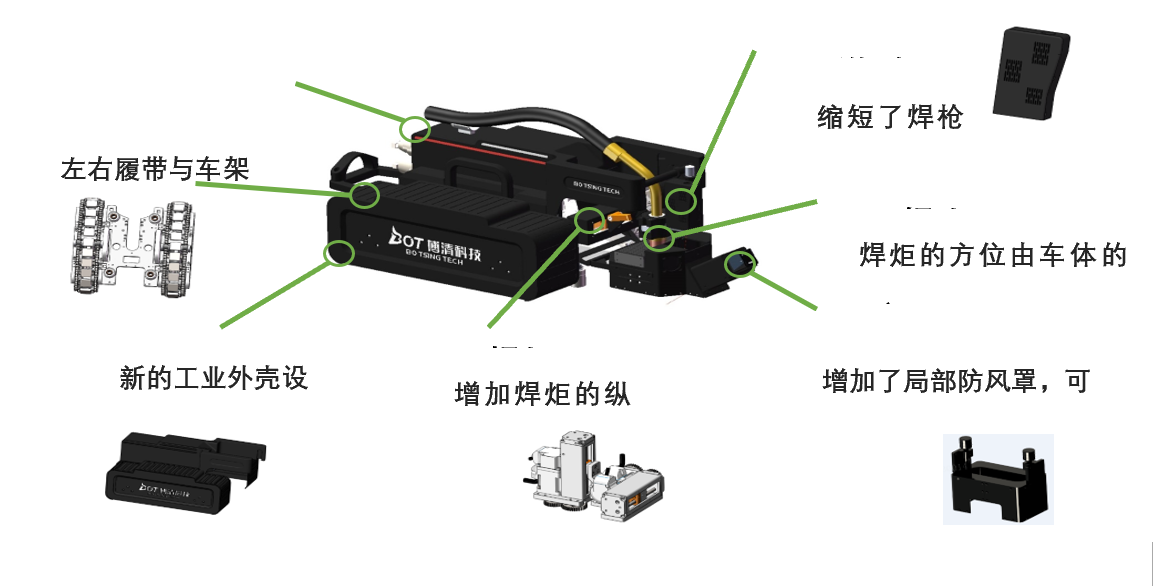Take you to understand the working principle of pipeline automatic welding robots
Date:2021-11-02 Views:1081
Pipeline automatic welding robot is an automatic welding equipment specifically used for pipeline welding. It uses solid core welding wire( φ 0.8~ φ 1.0), the protective gas used is CO2 or a mixture of gases (CO2+Ar). The welding direction is downward welding. The welding process parameters such as wire feeding speed, welding speed, and swing frequency are input by the welding process parameter input device.

Welders cannot modify it (or can only modify a certain range of parameters) to ensure the consistency of welding process parameters for each welding robot and each welding seam. This ensures the uniformity of the welding quality of each weld seam, achieving the goal of ensuring welding quality.
The pipeline automatic welding robot is suitable for narrow gap groove welding. Narrow gap grooves have the following advantages: saving welding materials. High welding efficiency. The welding joint has a small heating range and a small welding heat affected zone. Welding deformation and stress are small. The structure and properties of the weld seam are good. This welding equipment is suitable for various groove forms of welding.
When used for welding V-shaped grooves, except for the lower welding efficiency of narrow gap grooves (which can still reach 2-5 times that of manual welding), other welding advantages are still prominent. Before welding in engineering, pipeline automatic welding robots should undergo weldability tests. When there are changes in the material, specifications, groove type, grade of welding wire, specification of welding wire, and type of protective gas of the steel pipe, a weldability test should be conducted.
Pipeline automatic welding robot is an automatic welding equipment specifically used for pipeline welding. It uses solid core welding wire( φ 0.8~ φ 1.0), the protective gas used is CO2 or a mixture of gases (CO2+Ar). The welding direction is downward welding. The welding process parameters such as wire feeding speed, welding speed, and swing frequency are input by the welding process parameter input device.

Welders cannot modify it (or can only modify a certain range of parameters) to ensure the consistency of welding process parameters for each welding robot and each welding seam. This ensures the uniformity of the welding quality of each weld seam, achieving the goal of ensuring welding quality.
The pipeline automatic welding robot is suitable for narrow gap groove welding. Narrow gap grooves have the following advantages: saving welding materials. High welding efficiency. The welding joint has a small heating range and a small welding heat affected zone. Welding deformation and stress are small. The structure and properties of the weld seam are good. This welding equipment is suitable for various groove forms of welding.
When used for welding V-shaped grooves, except for the lower welding efficiency of narrow gap grooves (which can still reach 2-5 times that of manual welding), other welding advantages are still prominent. Before welding in engineering, pipeline automatic welding robots should undergo weldability tests. When there are changes in the material, specifications, groove type, grade of welding wire, specification of welding wire, and type of protective gas of the steel pipe, a weldability test should be conducted.











